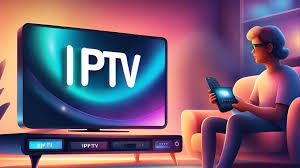Steps to Develop a High-Quality On-Demand Delivery App

In today’s fast-paced world, on-demand delivery apps have become an essential part of our daily lives. From food and groceries to medicines and parcels, these apps provide convenience and efficiency by bringing goods right to our doorstep. If you’re considering developing your own on-demand delivery app, you’re stepping into a competitive yet lucrative market. To ensure the success of your app, it’s essential to follow a systematic approach and focus on delivering a high-quality product. In this guide, we’ll walk you through the steps to develop a high-quality on-demand delivery app that meets user expectations and stands out in the market.
Market Research and Planning
Before diving into app development, it’s crucial to conduct thorough market research and planning to understand the landscape, identify opportunities, and define your app’s unique value proposition.
Identify Target Audience
Define your target audience based on demographics, location, and behavior patterns. Understand their needs, preferences, and pain points to tailor your app’s features and services accordingly.
Analyze Competitors
Research existing on-demand delivery apps in your target market. Analyze their strengths, weaknesses, and market positioning to identify areas where you can differentiate your app and offer additional value to users.
Define App Features
Based on your research findings and target audience preferences, define the core features and functionalities of your on-demand delivery app. This may include user registration, order placement, real-time tracking, payment integration, ratings and reviews, and customer support.
Choose the Right Technology Stack
Selecting the appropriate technology stack is crucial for building a scalable, reliable, and efficient on-demand delivery app. Consider factors such as platform compatibility, development time, and performance optimization when choosing your tech stack.
Mobile Platform
Decide whether you want to develop a native app for a specific platform (iOS or Android) or opt for a cross-platform framework like React Native or Flutter for simultaneous development across multiple platforms.
Back-End Development
Choose a robust back-end framework like Node.js, Django, or Laravel to power the server-side logic of your app. Ensure scalability, security, and performance optimization to handle high volumes of user traffic and data.
Database Management
Select a reliable database management system (DBMS) like MongoDB, PostgreSQL, or MySQL to store and manage user data, order information, and other app-related data. Consider factors such as data integrity, scalability, and performance when choosing your DBMS.
Cloud Hosting
Utilize cloud hosting services like AWS, Google Cloud, or Microsoft Azure for scalable and reliable hosting of your app’s infrastructure. Cloud hosting offers flexibility, scalability, and cost-effectiveness compared to traditional on-premises hosting solutions.
Design User Interface and Experience (UI/UX)
Designing an intuitive and visually appealing user interface (UI) and user experience (UX) is crucial for engaging users and ensuring seamless navigation and interaction within your app.
Wireframing and Prototyping
Start by creating wireframes and prototypes to visualize the layout, flow, and interactions of your app. This iterative process helps identify usability issues and refine the design before moving into development.
UI Design
Design a clean, modern, and intuitive user interface that aligns with your brand identity and resonates with your target audience. Focus on visual hierarchy, typography, color scheme, and branding elements to create a cohesive and immersive user experience.
UX Design
Optimize the user experience by simplifying navigation, minimizing friction points, and providing clear and actionable feedback at every step of the user journey. Conduct usability testing to gather feedback and iterate on the design to improve usability and satisfaction.
Develop and Test Your App
Once the design is finalized, it’s time to embark on the development and testing phase of your on-demand delivery app. Follow agile development practices and prioritize user feedback to iterate and improve your app continuously.
Front-End Development
Implement the user interface and client-side functionalities of your app using the chosen front-end technologies and frameworks. Ensure responsiveness, performance optimization, and cross-platform compatibility for a seamless user experience across devices.
Back-End Development
Develop the server-side logic, APIs, and database interactions of your app using the selected back-end technologies and frameworks. Implement features such as user authentication, order processing, real-time tracking, and payment integration with a focus on scalability, security, and reliability.
Testing and Quality Assurance
Conduct rigorous testing throughout the development process to identify and address bugs, performance issues, and usability problems. Perform functional testing, usability testing, compatibility testing, and security testing to ensure a high-quality and robust app.
Launch and Market Your App
With your app developed and tested, it’s time to launch it into the market and implement marketing strategies to attract users and drive adoption.
App Store Submission
Submit your app to the Apple App Store and Google Play Store for review and approval. Ensure compliance with platform guidelines and requirements to increase the chances of acceptance.
Marketing Campaigns
Implement targeted marketing campaigns to promote your app and attract users. Utilize a mix of digital marketing channels such as social media, search engine optimization (SEO), email marketing, and influencer partnerships to reach your target audience effectively.
User Acquisition and Retention
Focus on user acquisition and retention strategies to grow your user base and increase engagement. Offer incentives, discounts, and referral programs to incentivize users to download and use your app. Provide personalized experiences and excellent customer support to keep users coming back.
Conclusion
Developing a high-quality on-demand delivery app requires careful planning, strategic execution, and a relentless focus on user experience and value proposition. By following these steps, you can create a scalable, reliable, and efficient app that meets user expectations and stands out in the competitive market. With continuous iteration, optimization, and innovation, your on-demand delivery app has the potential to become a trusted platform for users to access convenient and reliable delivery services.









